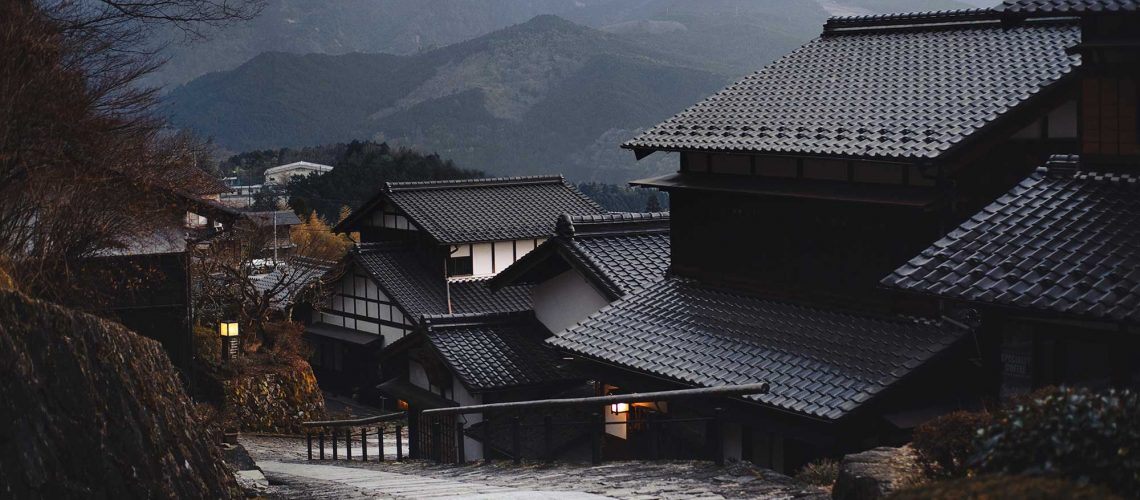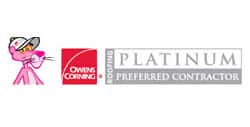Your roof works 24 hours a day, seven days a week to protect your household and keep everyone safe, warm, and dry. Whether it be a torrentially rainy morning, a blazing hot summer afternoon, or a particularly gusty evening, your roof has got you covered.
There are many different kinds of roofing, ranging from asphalt to terracotta to copper. While each of them comes with their own set of pros and cons, when deciding between the different types of roofs and roofing systems, you can count on metal roofs to come with a number of unique advantages.
How Long Does a Metal Roof Last?
A metal roof can last 40–70 years, depending on the type of metal it is constructed from. In contrast, traditional roofs made of asphalt have an estimated life expectancy of only 12–20 years. That’s, at minimum, a 100% increase in lifespan expectancy.
Not only do metal roofs have a longer baseline longevity, but they’re also more durable, further adding to its lifespan. Metal roofs can withstand high winds and impacts without corroding or cracking the way other roofing materials do. They also don’t require the same level of routine maintenance as different materials.
As a result, a metal roof installation can save you money, time, and headaches in the long run. By investing in a metal roof, you can ensure your roof is around to protect your home through rain, shine, and hail storms.
What Are The Advantages of a Metal Roof?
Metal roofs have other advantages beyond just longevity and durability. Here are a few of the highlights of a metal roof:
- Safe – If you live in an area prone to wildfires or thunderstorms, metal roofs stand as a pillar of home safety. As opposed to other types of materials, metal roofs won’t spark or catch on fire in the event of a wildfire or lightning strike.
- Energy Efficient – Metal roofs reflect solar heat, whereas other materials may absorb that heat and, as a result, increase the heat of your home. The reflection helps keep the base temperature of your house lower, which can reduce your cooling costs by 10–25%.
- Environmentally Friendly – Depending on the exact material, metal roofs can be made up of anywhere between 25–95% recycled materials. Additionally, they are also 100% recyclable after their life as a roof is up. Shingle roof tiles, on the other hand, end up creating a cumulative 20 billion pounds of waste per year. Learn more about why you should choose a metal roof over shingles installation.
Metal roofing comes with all of these great benefits for both yourself and the world. But how do you decide which kind of metal roofing is best for you and your house’s needs?
Different Kinds of Metal Roofing
While all metal roofs bring their own advantages, different types of metal cater to different needs. Below, we explore different metal roofing options and the benefits of each:
- Steel roofing
- Aluminum roofing
- High-end metal roofing
Steel Roofing
Steel roofing is one of the most commonly available metal roofing materials. It is sturdy, durable, and relatively economical as far as metal roofing goes. Frequently, steels are made out of some sort of alloy to reinforce strength and durability.
It’s a great choice, but it’s important to note that steel roofing does not perform as well in coastal cities and on farms where manure is used frequently. Salt in the air can corrode the metal, and ammonia can break down the coating often found on steel roofs.
Aluminum Roofing
Aluminum roofing, like steel, is commonly available, sturdy, durable, and economical. It is lighter and softer than steel, which may make it more prone to denting. However, it’s that same malleability that helps make installation on obscurely shaped roofs more convenient.
Plus, because aluminum doesn’t rust the same way steel does, an aluminum roof performs well in coastal cities.
High-End Metal Roofing
If you’re looking to make your metal roof installation a statement piece on your home, there are high-end metal roofing materials that have all the benefits of a metal roof while fitting better with your home’s aesthetic.
- Copper Metal Roofing – Copper metal is a great choice for a high-end metal roof. A copper roof doesn’t rust, scratch, or peel in the way that other kinds of metal roofing does. It also has an incredible lifespan, able to last hundreds of years. As an added bonus, copper roofs are easily recyclable.
- Alloy Roofing – Some steel roofs are alloys, or made up of different materials. If there is an exact look and durability that you’re looking for, alloy roofing is a good choice. They are strong, durable, and age gracefully.
- Stainless Steel Roofing – Stainless steel roofing, unlike its steel counterpart, won’t rust or corrode. It has a clean, sleek appearance and if it’s made into an alloy, it can be reinforced to be even stronger.
These metal roofing options are a great choice to help tie the entire design and feel of the outside of your house together while being durable and environmentally friendly.
Different Styles of Metal Roofing
Once you’ve decided on what kind of metal roofing you want to have, it’s time to consider what style of roofing you want to implement, and how each one best serves your needs.
Panels
There are a few different styles of metal panel roofing:
- Standing-Seam Roofing – This type of roofing has ribs every 6, 9, or 12 inches that self-seal. The panel edges interlock to provide a tight seal to protect the house from water. Depending on the locking system, a standing-seam metal roof can be made to fit different types of roofs.
- Batten Roofing – A subsect of standing-seam roofing, batten roofing have larger cover caps and have a specific ridge, hip, edge, and connection pieces made to fit the different roofing panels together.
These two types of panel roofing stand out for their modern, clean, and contemporary look.
Sheets
The biggest advantage of sheets is that they are easier to install. Because they come in large sections, this metal roof installation requires less time, and soon you will have the unique look and feel of a metal roof and all of the advantages that come with it. Sheets can also help bridge over irregularities over different parts of your house.
Shingles
A shingle roof is the best of both worlds solution—you get all of the advantages of a metal roof while mimicking the look and style of more traditional roofing materials. Because they are in individual shingles, it is more time-intensive to install. While they take longer, a shingle roof is more accommodating for irregular or complicated roof shapes.
The metal shingles are often coated and formed to mimic the same shapes as:
- Spanish and mission tiles
- Slate
- Victorian metal tiles
- Wood shakes
Not All Installations Are Equal
Roofs are a long-term investment for your home, so it’s important to take the installation process just as seriously as the selection process. For metal roofing, because the skills and tools differ from traditional roofing, it’s important to pick a roofing contractor who is experienced for your roof replacement or installation.
Metal Roofs and Solar Panels
On their own, metal roofs are energy efficient by reducing the amount of heat needed for your house. If you’re environmentally conscious, you’re in luck! Metal roofs are one of the best materials for installing solar panels.
There are five major considerations when it comes to installing solar panels on metal roofs:
- It’s easy to mount solar panels on a metal roof – Typically, to install solar panels, the roofing contractor needs to drill holes in the roof, which may open up the potential for leaks in the future. However, with a metal roof, there is no need to drill holes, which almost entirely eliminates issues further down the road.
- Solar metal roofs can host thin-film panels and standard PV panels – Metal roofs have the rare opportunity to install thin-film panels that are not available to many types of traditional roofing. Although PV panels are more efficient, thin-film solar panels require less energy to manufacture, making them a lower-emissions renewable energy source. In addition, they are easier to install.
- Metal roofs are durable and can outlive your solar panels – Solar panels generally have a lifespan of 25–30 years. Since many traditional roofing materials have a lifespan of 12–20 years, that means that the solar panels tend to outlive the roof and end up creating complications. However, the longevity of a metal roof means that they will outlive the solar panels, removing the future headache.
- Solar panels can increase the cooling benefits of a metal roof – By reflecting sunlight instead of absorbing it, metal roofs already cool off houses more than traditional roofing. Installing solar panels creates an additional layer of shade over the metal roof, amplifying its cooling effects.
- Metal roofs and solar panels generate an eco-friendly home – Eco-friendly homes are good for the environment. By spending less money on cooling your home, using renewable energy and building your roof out of recyclable metals, your roof helps not only your electricity costs but also the Earth!
The Cherry On Top Of Your Home
The roof is a very important cherry on top of your home. Depending on where you live and what you’re looking for out of a roof, different roofing products and materials present different benefits and drawbacks. Learn more about the average cost of metal roof installation.
Metal roofing, though less traditional, brings a unique flair with a slew of benefits. Longevity, strength, durability, energy efficiency, and environmental consideration are just a number of advantages that come with these types of roofs. See the possibilities of installing a metal roof from your local roofing specialist.
Sources:
StateFarm. Pros and cons of metal roofs for your home. https://www.statefarm.com/simple-insights/smart-ideas/wondering-about-metal-roofs-here-are-the-pros-and-cons
HomeTips. Pros and Cons of Metal Roofing. https://www.hometips.com/buying-guides/metal-roofing-drawbacks.html
HomeTips. Metal Roofing – Ultimate Buying Guide. https://www.hometips.com/buying-guides/metal-roofing.html
EnergySage. All about solar panels on metal roofs. https://news.energysage.com/solar-metal-roofs-top-5-things-need-know/








